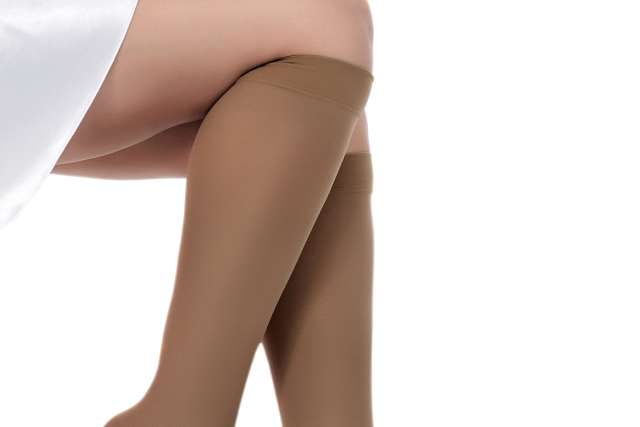Dear Doctors: My job requires a lot of travel, including long-haul flights. My mom says that I need to start wearing compression socks so I do not get a blood clot. I'm 27, not overweight and in good health. Plus, our company books lie-flat seats, and I always get up and walk around. Am I really at risk?
Dear Reader: Your mother is concerned about deep vein thrombosis, often referred to simply as DVT. It's a condition that can occur when a blood clot develops in one of the veins that are, as the name says, found deeper inside the body.
Most often, these types of clots form in the larger veins in the legs. However, it's possible for DVT to occur in the cerebral veins, which serve the brain; the mesenteric veins, which are found in the abdomen; and the veins of the arms.
While often associated with heart attack, stroke, cardiovascular disease and inflammation, DVT can also occur due to prolonged immobility. This includes individuals required to spend long periods of time in bed, those with limited movement due to spinal injuries and passengers on long flights. Additional risk factors include anesthesia and surgery, being pregnant, being overweight, smoking, physical injury and a range of clotting disorders. And while it's true that older adults are at increased risk of DVT, it can happen at any age.
Whatever the cause or physical location of DVT, it is dangerous. That's due to the potential for these clots to impede or even completely obstruct the flow of blood. If they break free and enter the bloodstream, they can travel to the lungs, again blocking the flow of blood. When this occurs, it's known as a pulmonary embolism.
Symptoms of DVT include swelling in the legs, tenderness, cramping or pain that is often located in the calf, unusual warmth in the leg and a darkening of skin color. In people with pale skin, this may look like reddening. In those with darker skin tones, the skin may take on a purplish hue. It's also possible for DVT to occur without noticeable symptoms. Shortness of breath, chest pain during a deep inhale and a cough that produces blood can be a sign that a clot has reached the lungs.
When DVT is suspected, immediate medical care is crucial. Treatment focuses on medications to break up the clot and to prevent more clots. It also includes the compression socks your mother has asked you to use.
Lie-flat seats certainly make long flights more comfortable, but being prone doesn't prevent blood clots. Keeping the blood circulating does. This is best achieved with regular movement. Your practice of taking frequent walks through the cabin is recommended to all flyers. So are in-seat exercises such ankle circles, foot flexes, knee lifts and shoulder and neck rolls.
And, yes, your mom is right: Compression knee socks, which exert gentle and sustained pressure on the calves, will help prevent blood from pooling. They're widely available at online retailers and come in cute and fashionable versions. Even people with no physical risk factors can benefit from wearing compression socks on lengthy flights.
(Send your questions to [email protected], or write: Ask the Doctors, c/o UCLA Health Sciences Media Relations, 10960 Wilshire Blvd., Suite 1955, Los Angeles, CA, 90024. Owing to the volume of mail, personal replies cannot be provided.)





